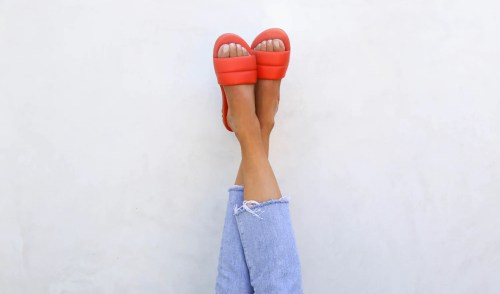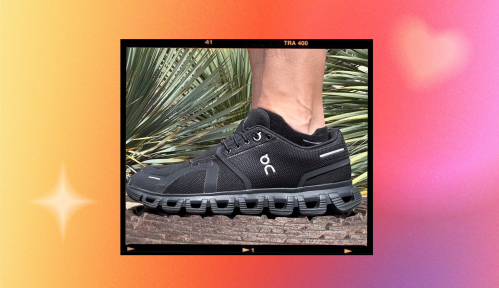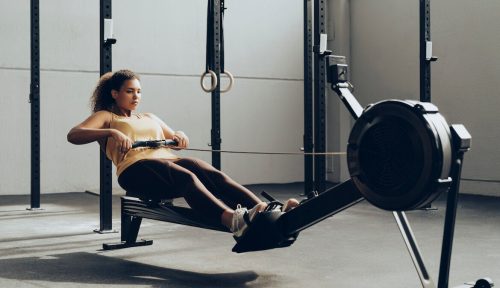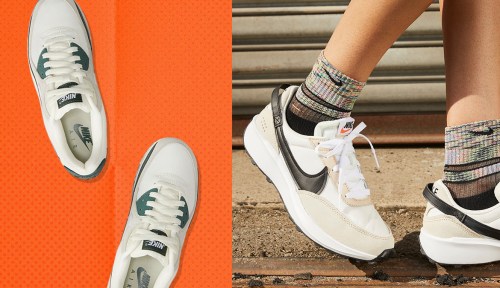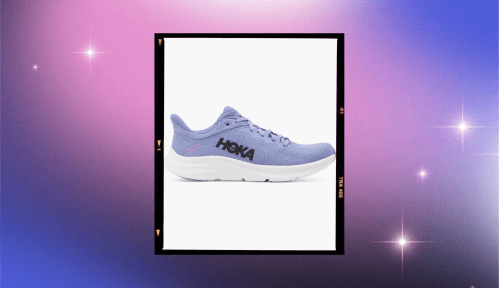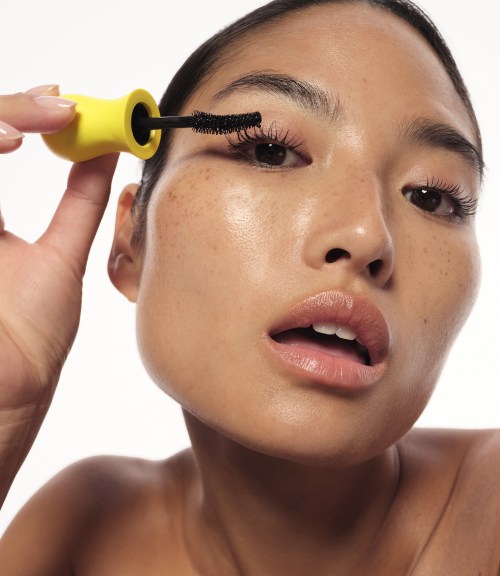Our editors independently select these products. Making a purchase through our links may earn Well+Good a commission
People with “average” feet are lucky to not have to think much about shoe shopping beyond pondering styles and colors (and, okay, price too!), but those of us with stubborn foot issues might splurge on walking-friendly sneakers or arch-support slippers and still suffer from foot pain. Sometimes arch support insoles can help, though. For example, if you have high arches, flat feet, or plantar fasciitis, special insoles can give you relief while walking and running.
Experts in This Article
board-certified podiatrist and orthopedic surgeon at UMass Memorial Health
board-certified podiatrist and founder of Step Up Footcare in New York City
Best arch support insoles, at a glance
- Best on Amazon: Powerstep, Pinnacle Arch Support Insoles, $28
- Best cushioned: Spenco, Polysorb Arch Support Insoles, $25
- Best sustainably made: Fulton, The Classic Insole, $48
- Best for women: Superfeet, BERRY Women’s Comfort Medium Arch Support and Forefoot Cushion, $60
- Best extra-deep heel cups: 10 Seconds, 3810 Arch Support Insoles, $65
- Best firm: PCSsole, Arch Support Insoles, $21
- Best for larger feet: Walkomfy, Arch Support Insoles, $20
- Best for high-impact activities: Sorbothane, Medium Arch Support Insoles, $58
- Best for slim-fit shoes: New Balance, Slim Fit Arch Support Insoles, $55
- Best for athletic shoes: Birkenstock, Birko Sport Arch Support Insoles, $70
- Best for dress shoes: Pedag, Arch De Luxe Support Insole, $20
Who should wear insoles?
The first rule of wearing supportive insoles is to make sure you truly need them. As Frances J. Lagana, DPM, a podiatrist at UMass Memorial Health, says, “Many times a patient’s problem is not because they need arch supports; it’s more because they are wearing the wrong shoes or the wrong size shoes. It’s essential to have the correct-fitting shoe before even talking about getting arch supports.” To confirm your shoe size, Dr. Lagana recommends getting measured at a brick-and-mortar store. “Over 40 percent of adults in the United States—and I was one of them—are wearing the wrong size shoe,” she says.
There are so many different types and brands of insoles that choosing can be a challenge, says podiatrist Nelya Lobkova, DPM, of Step Up Footcare in New York City. “Insoles should be used in all walking, running, [or] activity shoes. However, depending on the shoe and activity type, prefabricated inserts (also known as over-the-counter orthotics) may not always be sufficient because of their thickness. For dress shoes, boots, and activity-specific shoes, such as soccer cleats and tennis shoes, I advise seeing a podiatrist to get fitted for a pair of custom orthotics, which are thinner and may be placed over insoles in dress shoes. Over-the counter insoles will last 6 to 9 months typically. Custom orthotics are made from different layers of the super high density foam called polypropylene and EVA. Thus, they last for 3 to 4 years when worn daily.”
Dr. Lagana suggests seeing a podiatrist before buying insoles, because wearing the wrong type can make your foot problems worse. Also, skip the drugstore. “The items that you get at Walmart or CVS are never going to be able to address your problems,” she says.
What to look for in insoles for arch support
Orthotics or insoles have different components for different parts of the feet: a heel component, an arch component, and a forefoot component. “Generally, look for insoles with a deep heel cup, firm medial and lateral support, and cushioning under the ball of the foot,” says Dr. Lobkova.
Size
You should look for full-length insoles so there is minimal sliding of the insole in the shoe and all the components of the insoles are properly aligned with their corresponding area of the foot, says Dr. Lobkova. “Insoles act to keep the foot consistently in a neutral position to minimize the abnormal movement around the mid-foot during walking. Insoles also act to shift the center of gravity of the body from the inside of the foot to a more optimal position, eliminating the commonly associated knee and low back pain,” she says.
Firmness
Orthotics or insoles should be made of a high-density foam, and thus they should be semi-rigid (you should not be able to bend them in half). Dr. Lobkova says to avoid soft and very flexible insoles, such as Dr. Scholl’s heel cushions, which are too soft and can actually contribute to foot and ankle instability.
In addition, Dr. Lagana also shared a few key basics for using them: Wear them in both shoes, and remove existing ones from athletic shoes. With all this in mind, try one of these 11 insoles for arch support. Your feet will thank you.
Best on Amazon
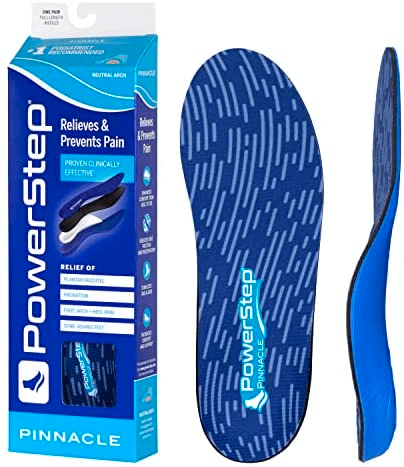
Powerstep, Pinnacle Arch Support Insoles — $28.00
Sizes available: Women’s 5 to 13.5/ Men’s 3 to 16
Insoles from PowerStep—“the #1 podiatrist-recommended brand of orthotic insoles”—are designed by a podiatrist and made in the US. The two-layer cushioning limits stress on your feet, joints, and tendons while providing comfort and support. They’re compatible with walking and running shoes, work shoes, and some casual and dress shoes.
Pros:
- Over 16,600 5-star ratings on Amazon
- Anti-microbial top layer
- Trimming is typically not required
Con:
- Some reviewers say these are too thick for certain shoes
Best cushioned

Spenco, Polysorb Arch Support Insoles — $25.00
Sizes available: Women’s 5 to 12.5/ Men’s 8 to 15.5
Recommended by Dr. Lagana as a quality option, this brand has been around forever (well, since 1967), and these particular insoles have over 5,400 5-star reviews on Amazon. They have enough cushioning—including for the forefoot and heel—to provide shock absorption for high-impact sports while the four-way stretch fabric prevents blisters.
Pros:
- Wide size range
- Odor control
Con:
- The insole heel height may raise your feet too much for lower-profile shoes
Best sustainably made
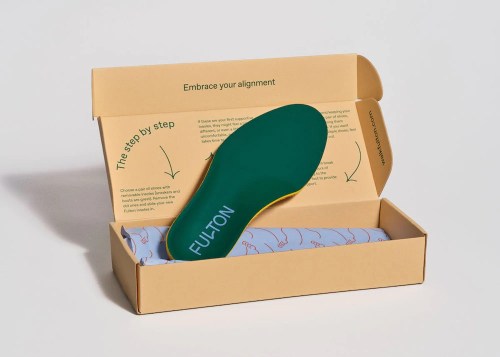
Fulton, The Classic Insole — $48.00
Originally $60, now $48
Sizes available: Women’s 5 to 12/ Men’s 8 to 14
W+G editors are big fans of Fulton’s cork insoles, thanks to their shock-absorbing support and sustainable design. Each insole features three thoughtful layers for better alignment and comfort on your feet: a cactus leather top layer (for eco-friendly cushion), an antimicrobial mid-layer (that’s made from sustainable foam), and a cork bottom (that molds to your feet in after about 10 hours of wear time.)
Pros:
- Affordable
- Molds to fit feet
Cons:
- Tough to break in at first
- Height of insole is better suited for deeper shoes
Best for women
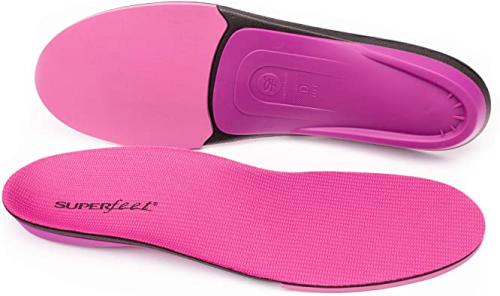
Superfeet, BERRY Women’s Comfort Medium Arch Support and Forefoot Cushion — $60.00
Sizes available: Women’s 4.5 to 12
Superfeet is a well-known brand among runners, and Dr. Lagana recommends it as a good choice for arch support insoles. These insoles are specifically designed for a woman’s foot (many insoles are unisex) and reduce stress on your feet, ankles, and knees by providing stability and support. They’re made for high-impact activities and can withstand long distances.
Pros:
- Wide size range
- Odor control
Con:
- Pricey
Best extra-deep heel cups
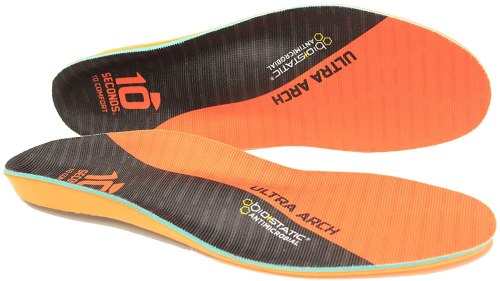
10 Seconds, 3810 Arch Support Insoles — $65.00
Sizes available: Women’s 5.5 to 12/ Men’s 6 to 14.5
These insoles feature extra-deep heel cups to cushion your foot naturally, carbon fiber material for strong support, and “foot strike pads” for maximum shock absorption. They’re compatible with athletic, hiking, casual, and dress shoes (if they have removable insoles).
Pros:
- Durable
- Latex-free
Con:
- Some reviewers aren’t fans of the metatarsal pad in the insole
Best firm

PCSsole, Arch Support Insoles — $21.00
Originally $28, now $21
Sizes available: Women’s 6 to 14.5/ Men’s 6.5 to 13.5
These lightweight, three-quarter-length insoles work well with athletic shoes, casual shoes (including canvas), dress shoes, and work shoes. They’re designed to relieve pain and reduce fatigue during both exercise and everyday activities, and the deep heel cup helps stabilize and balance your foot.
Pros:
- Over 5,900 5-star reviews on Amazon
- Anti-slip
- Affordable
Con:
- Some reviewers say they wish the insoles were narrower
Best for larger feet
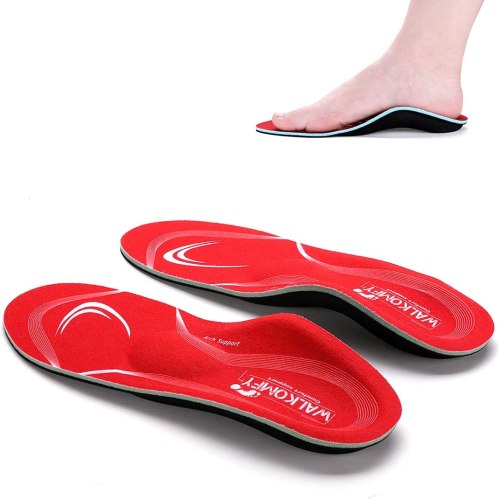
Walkomfy, Arch Support Insoles — $22.00
Originally $26, now $20
Sizes available: Women’s 6 to 15.5/ Men’s 4 to 13.5
These arch support insoles provide moderate support for walking and running in all sorts of footwear, including hiking boots, everyday shoes, and work shoes. The company claims that the insoles can correct overpronation (feet rolling inward when you move) and relieve heel and ball-of-foot pain, heel spurs, plantar fasciitis, and Achilles tendinitis. (If you suspect you have one of these conditions, it’s best to see a podiatrist.)
Pros:
- Non-slip surface
- Moisture-wicking technology
- Wide size range
Con:
- Reviewers say it takes some time to adjust to the round support in the middle
Best for high-impact activities
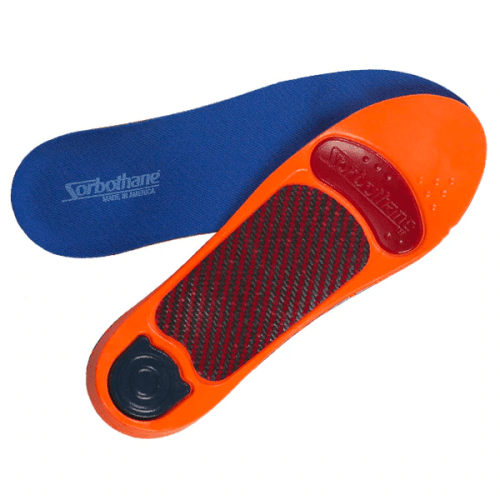
Sorbothane, Medium Arch Support Insoles — $58.00
Sizes available: Women’s 6 to 13/ Men’s 5 to 15
Sorbothane is another one of Dr. Lagana’s recommended insole brands that are available online. These insoles were created for “highly active” people and are made in the States. They’re compatible with athletic, casual, and dress shoes and are designed to provide relief for Achilles tendinitis, plantar fasciitis, arch pain and strain, flat feet, overpronation, supination, shin splints, and bunions. (If you suspect you have any of these issues, a podiatrist visit is a smart move.)
Pros:
- Non-slip surface
- Up to 94.7 percent shock absorption
- 60-day wear test guarantee
Con:
- Pricey
Best for slim-fit shoes

New Balance, Slim Fit Arch Support Insoles — $55.00
Sizes available: Women’s 4.5 to 12/ Men’s 2.5 to 15
These insoles from New Balance are specifically designed to be thin enough to fit in slim-fitting shoes, as opposed to a range of footwear like many other insoles. Plus, they’re designed with Superfeet insole technology (see above).
Pros:
- Wide size range
- Moisture-wicking top layer
- Odor control
Con:
- Some reviewers dislike the deep heel cup
Best for athletic shoes

Birkenstock, Birko Sport Arch Support Insoles — $70.00
Sizes available: Women’s 4 to 13.5/ Men’s 6 to 14.5
Yes, Birkenstock doesn’t just make love-’em-or-hate-’em sandals, but insoles, too! Made in Germany, these arch support insoles are meant for athletic shoes and are made with a shock-absorbing top layer and extra cushioning for the ball of the foot. As it’s a Birkenstock product, it’s not surprising that the design contains cork—more specifically, their own “BirkoCork” (cork and EVA foam).
Pros:
- Wide size range
- Hand-washable
Con:
- Pricey
Best for dress shoes
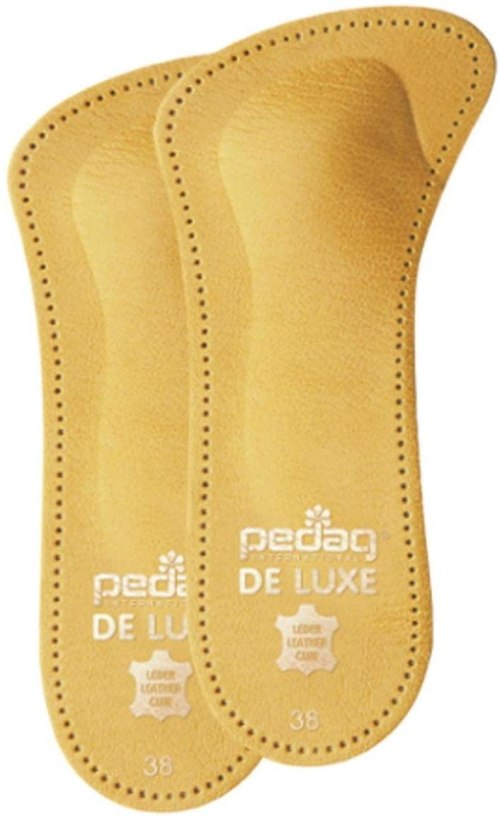
Pedag, Arch De Luxe Support Insole — $20.00
Sizes available: Women’s 6 to 12/ Men’s 6 to 9
These arch support insoles have one key difference from the others on our list: They’re made from leather. Handmade in Germany, they are relatively thin and are designed for flats and low-heeled shoes. The leather is vegetable tanned (rather than synthetically treated), the adhesives are water-based and skin-friendly, and no solvents are used. (Leather production solvents are harmful to the environment and also to workers.)
Pros:
- Self-adhesive
- Reviewers say they are comfortable
Con:
- Some reviewers dislike the lack of metatarsal support
Sign up for the Well+Good SHOP Newsletter
Get exclusive deals on wellness, beauty, fitness, and food products that have been hand-picked by our editors.
Got it, you've been added to our email list.


